AI or Manual Recruiting: Which Parts to Automate and Which to Keep Human")

Should I Use AI Recruiting Tools or Hire Manually?
Your LinkedIn inbox is flooded with AI recruiting tool pitches. Every one promises to "revolutionize your hiring." Meanwhile, you're spending Tuesday nights screening resumes that looked perfect on paper but bomb in the actual interview.
So you're asking: Should I finally bite the bullet on one of these AI tools? Or is this just expensive hype that'll give me bad hires faster?
Here's what no one's telling you: The question itself is wrong.
It's not "AI or manual." It's "what should AI do, and what must humans do?" Get this backwards, and you either waste money automating the wrong things or waste time on manual tasks AI could handle in seconds.
Let me show you exactly which parts of hiring to automate, which parts require human judgment, and how to evaluate AI recruiting tools without getting sold snake oil.
🔑 Key Takeaways
- AI excels at tireless searching and filtering—analyzing 500+ profiles to find the 5 that matter
- Humans must own all judgment calls: cultural fit, contextual evaluation, relationship-building
- The real risk isn't AI adoption—it's automating broken processes
- Bad AI tools make bad hiring decisions faster (keyword matching at scale)
- Good AI eliminates busywork so humans focus on what actually matters
- Before buying any AI tool, ask: "Does this help humans judge better, or replace judgment?"
👉 See how SuperHired achieves 95% retention with AI-human partnership →
"AI doesn't understand context. Humans don't have 24 hours to search."
That's the tension, isn't it?
You know AI can search faster than any human. You've seen the demos, 500 LinkedIn profiles analyzed in minutes. But you also know hiring isn't about speed. It's about finding people who'll multiply your team's capabilities. And AI has no idea what "better" means for YOUR specific team.
So you're stuck. Manual recruiting is drowning you. AI recruiting scares you. And meanwhile, your competitors are somehow hiring great people while you're still screening resumes.
Here's what's actually happening: The best companies aren't choosing AI or humans. They're using both... for completely different things.
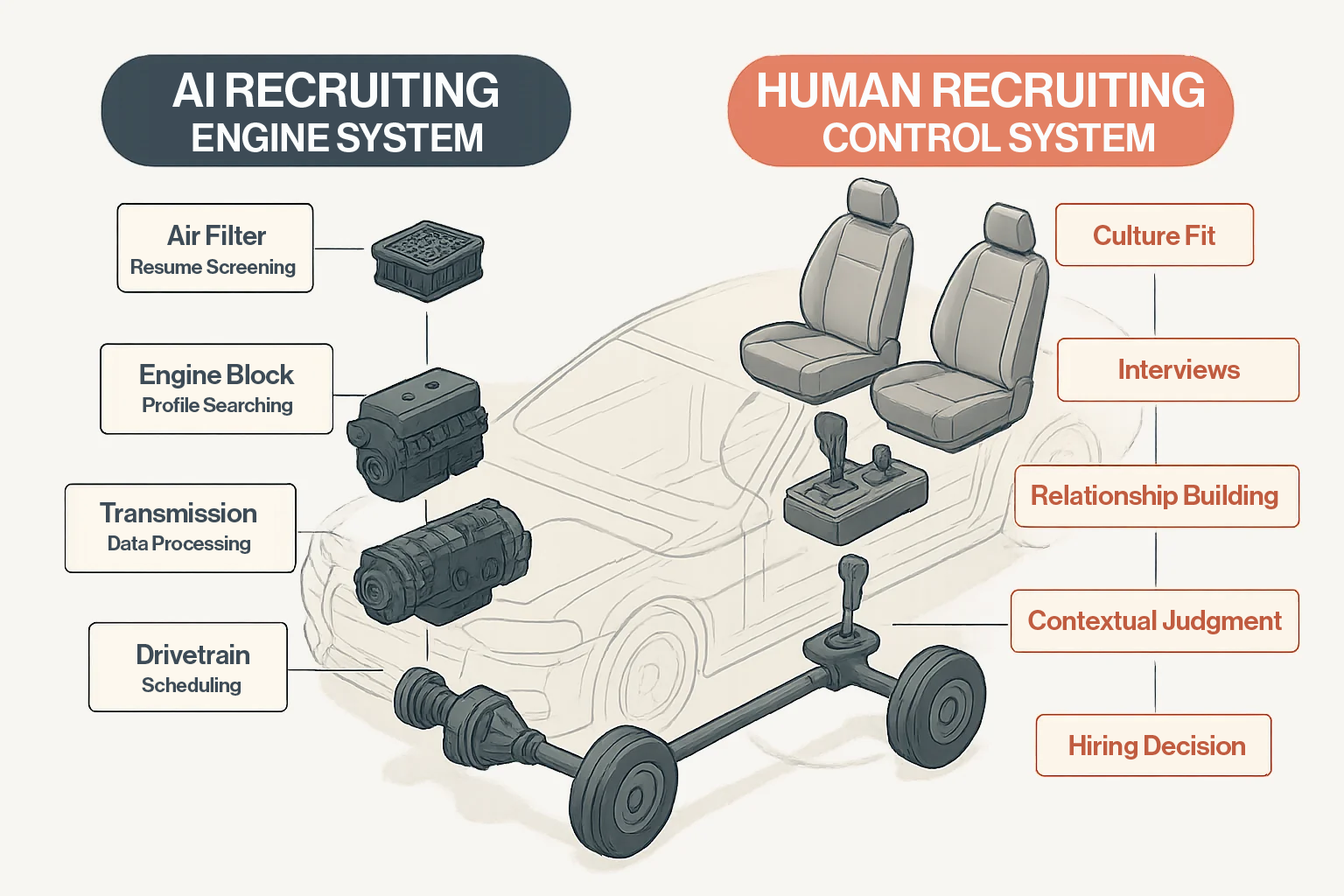
Think of it like driving a car. The engine does the work of moving you forward (that's AI... tireless, consistent, powerful). But you're steering (that's human judgment... contextual, nuanced, relationship-focused).
You wouldn't try to steer with the engine. And you wouldn't try to power the car with your judgment. Both are essential. Both do different jobs.
Let's start with what AI actually does well, and more importantly, what it absolutely can't do.
What AI Can Do (And What It Absolutely Cannot)
"Most AI recruiting tools just make broken hiring processes run faster."
That's the trap. If your manual process focuses on the wrong things, keyword matching, credential checking, rushing to fill seats... then automating broken processes just makes things worse faster → It just helps you make bad decisions more efficiently.
So before we talk about which AI tools to use, let's be clear about what AI can and can't do.
What AI Genuinely Excels At
Tireless searching across platforms you'd never manually check.
A human recruiter might review 20-30 LinkedIn profiles in an hour. Maybe 50 if they're really pushing. Then they need a break because staring at resumes is soul-crushing.
AI? It analyzes 500+ profiles while you sleep. LinkedIn, GitHub, Stack Overflow, niche job boards, industry forums, conference speaker lists. It never gets tired. It never gets bored. It never says "I can't look at another resume today."
Filtering obvious mismatches instantly.
Wrong location? Wrong experience level? Missing critical requirements that you've clearly stated? AI eliminates these in seconds. No human needs to waste time reviewing someone based in New York when you explicitly need someone in San Francisco. No one needs to read the resume of a junior developer when you're hiring for a senior architect role.
This isn't judgment. This is math. And AI is very good at math.
Pattern recognition at scale.
AI spots patterns across hundreds of data points that humans simply can't process. Which combinations of experience, skills, and background correlate with success in your specific environment? What signals predict someone will thrive on your team versus struggle?
When you've hired 200 people and tracked their performance over 18 months, AI can find patterns in what made the successful ones successful. 🎯 Discover how we achieve 95% retention through AI-powered pattern recognition → Humans see individual stories. AI sees the systems.
Consistent evaluation without bias or fatigue.
At 9am on Monday morning, you're sharp. You evaluate candidates fairly. By 4pm on Friday, after reviewing 50 resumes? You're tired. Your judgment gets sloppy. You start making different decisions than you would have made on Monday.

AI applies the exact same criteria every single time. It doesn't get tired. It doesn't have unconscious bias favoring candidates who went to the same school you did. It doesn't give extra points to people who remind you of yourself.
What AI Absolutely Cannot Do (And Humans Must)
Understanding context beyond the data.
A resume says "software engineer at Tech Company X." AI sees a keyword match. That's all it knows.
A human asks: What was that company like? Was it a 10-person startup or a 10,000-person enterprise? What was the team structure? What environment did this person thrive in or struggle in? Why did they leave?
Context isn't on the resume. Context is in the conversation.
Building actual relationships with passive talent.
Here's what most people don't understand about great hiring: The best candidates aren't desperately scrolling job boards. They're busy being excellent at their current jobs.
You need to convince these people to care about what you're building. That requires relationship-building. Real conversations. Understanding what motivates them beyond "I need a job."
Can AI do this? No. AI sends generic InMail messages that everyone ignores. Humans build relationships that make exceptional people curious about your company.
Applying judgment to edge cases that matter.
What about the candidate who left three jobs in two years... but each time it was because the startup ran out of funding, not because they couldn't do the work?
AI sees: Red flag. Job hopper. Reject.
Humans see: Unlucky with startup selection, but actually very loyal until the money runs out. Let's dig deeper.
What about the candidate who has the "wrong" educational background but taught themselves everything they know and has a portfolio that's better than people with fancy degrees?
AI sees: Doesn't meet credential requirements. Reject.
Humans see: Self-driven learner with proven capability. Exactly who we want.
Ensuring cultural chemistry beyond data.
Can AI tell you if someone will make your team better or worse? If their communication style will mesh with your existing team? If they'll elevate the culture or drag it down?
No.
That requires conversations. That requires watching how they handle feedback. That requires seeing how they solve problems in real-time. That requires human judgment about dynamics that don't show up in data.
"If your manual process is broken, AI just breaks things faster."
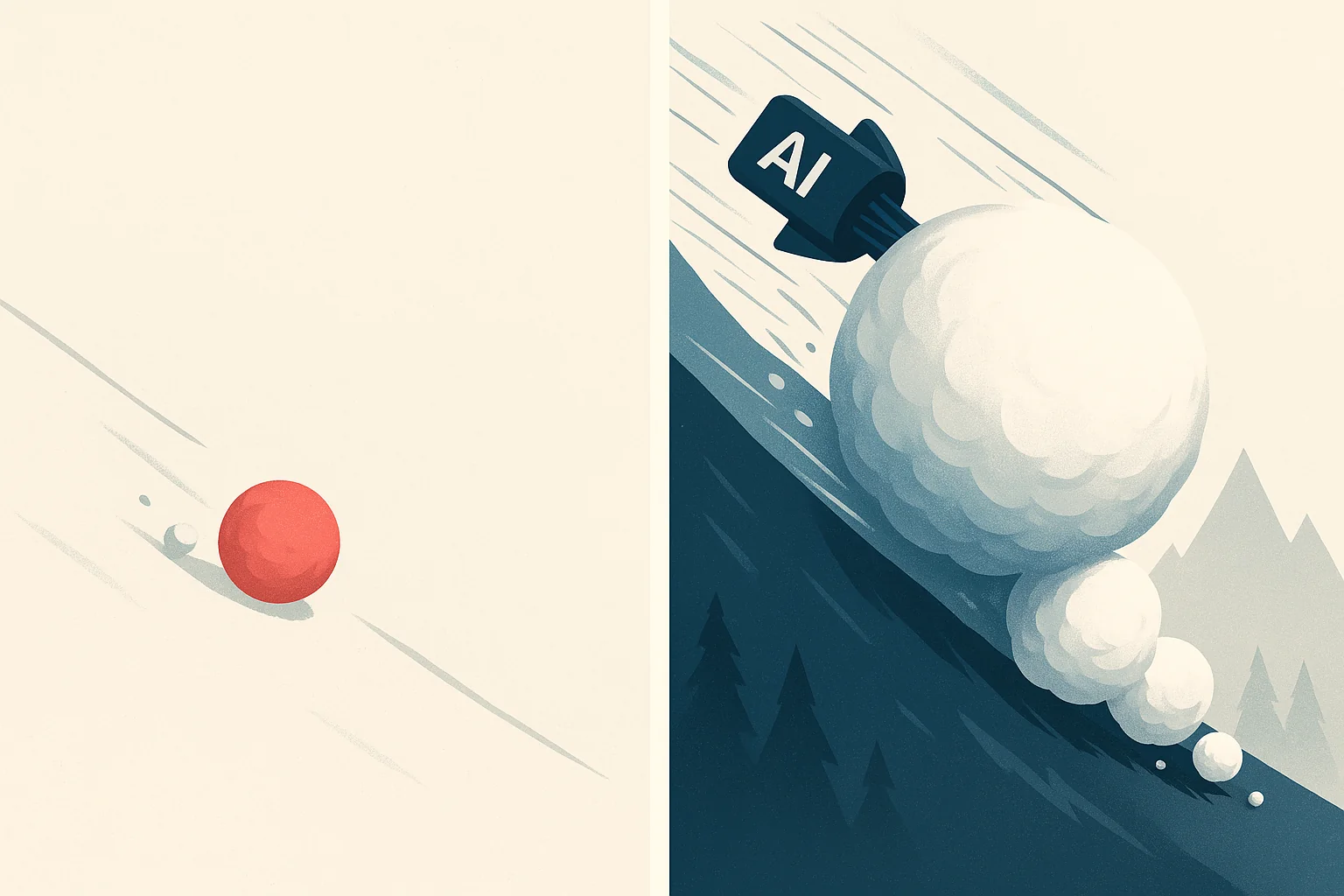
This is what keeps you up at night, isn't it? The fear that you'll spend money on AI tools and end up with the same bad hires... just faster.
That fear? Completely valid.
Because here's what most AI recruiting companies won't tell you: If your hiring process is focused on the wrong things, AI doesn't fix it. AI just accelerates the wrongness.
The Trap Most Companies Fall Into
Take Juicebox AI. Just raised $36 million in Series A funding. Big news in the recruiting world. Their pitch? "Use AI to find candidates faster based on keyword matching."
Sounds great, right?
Except it doesn't solve the actual problem with hiring. It just helps you find people who have certain keywords on their resumes... faster.
Does it help you understand if someone will actually thrive in YOUR specific environment? No.
Does it help you discover what candidates actually want from work? No.
Does it help you assess if this person will make your team better or worse? No.
Juicebox AI, and tools like it, just allow the current broken system to pedal faster.
If your manual process is:
- Focused on keyword matching
- Rushing to fill seats quickly
- Skipping deep discovery about what you actually need
- Using interviews as the primary validation method
Then automating that process with AI just means you make bad hiring decisions more efficiently.
What You're Actually Protecting
When you resist AI recruiting tools, here's what you're really protecting (even if you can't articulate it):
Context. You know that hiring isn't about keywords. It's about understanding whether someone will thrive HERE, with THIS team, doing THIS specific work.
Relationships. You know the best people aren't on job boards. They need to be convinced to care about what you're building.
Cultural chemistry. You know skills can be taught, but culture can't be retrofitted.
Judgment on edge cases. You know that the perfect candidate on paper sometimes bombs in reality, and the "risky" candidate sometimes becomes your best hire.
These instincts? They're right.
The problem isn't that you should ignore these instincts. The problem is that you're trying to do ALL of this manually, including the parts that AI could handle better.
The Partnership Framework: What AI Should Do, What Humans Must Do
"The question isn't whether to use AI. It's whether you're automating first principles or automating broken processes."
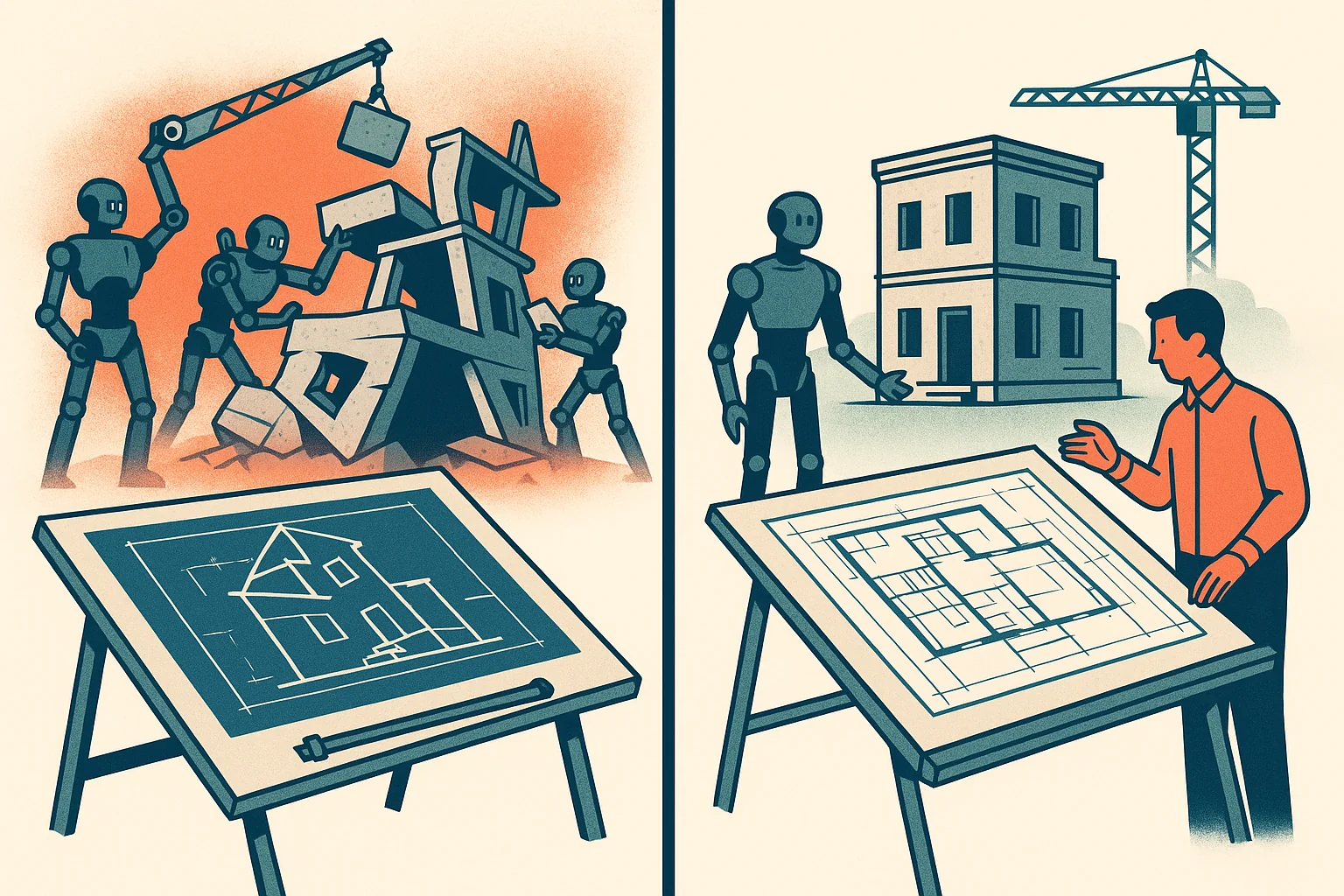
Here's the framework that actually works. The one that lets you scale your hiring without sacrificing the judgment that leads to great hires.
What AI Should Do: Automate the Search
Let AI handle the high-volume, low-judgment work that drains human energy:
Source candidates 24/7 across platforms you'd never manually check. While you sleep, while you're in meetings, while you're actually running your business. AI is searching everywhere for people who match your profile.
Filter obvious mismatches so humans never waste time. Wrong location? Wrong experience level? Missing non-negotiable requirements? AI eliminates these instantly.
Identify patterns across hundreds of profiles. What combinations of background and experience predict success in your environment? AI can spot these patterns where humans see individual cases.
Screen for basic qualifications instantly. Do they have the required years of experience? The specific technical skills? The relevant education? AI handles the yes/no questions so humans can focus on the "maybe" questions that require judgment.
Why AI should do these things? Because they're soul-crushing when done manually. And AI does them better, faster, and more consistently than any human ever could.
What Humans Must Do: Own the Judgment
Humans must handle everything that requires context, relationship-building, and judgment:
Conduct discovery to understand what you actually need. Not "we need a marketing manager." But: What does this person need to accomplish? In what environment? With what team dynamics? What behaviors make someone successful HERE?
This requires 30-40 questions to map the work product, team dynamics, and cultural requirements. AI can't do this. Humans must.
Evaluate candidates in context, not in isolation. It's not "software engineer." It's "software engineer at THIS company, in THAT environment, working with THIS team, solving THESE specific problems."
Context changes everything. And context isn't in the resume.
Have conversations to build relationships and assess fit. The best candidates aren't convinced by job descriptions. They're convinced by understanding what you're building, why it matters, and why they specifically should care.
This requires real conversations. Not chatbots. Not automated sequences. Real humans building real relationships.
Make all decisions that actually matter. AI suggests. Humans decide. Always.
AI can present candidates and say "these five match your profile." Humans look at those five and say "yes, but what about the context I can see that AI can't?"
Ensure cultural chemistry beyond what data can predict. Will this person make your team better or worse? Will they elevate the culture or drag it down? Will their communication style mesh with your team?
These questions require human judgment watching someone solve problems, handle feedback, and interact with your team.
"AI finds them. Humans convince them. You get great teams."

That's our methodology at SuperHired. And it works because we're clear about the partnership:
AI's job: Search everywhere 24/7. Analyze 500+ profiles per role. Filter obvious mismatches. Present candidates who match the profile.
Humans' job: Conduct discovery to define what "match" actually means. Evaluate presented candidates in full context. Have real conversations. Build relationships. Make every decision that matters. Convince great people to care.
The result? We achieve 95% retention at 18 months because we're leveraging both AI and humans for what they're genuinely good at, not trying to make AI do human work or humans do AI work.
How to Evaluate AI Recruiting Tools (Without Getting Sold Snake Oil)
"Before you buy any AI recruiting tool, ask one critical question."
The market is flooded with AI recruiting tools. They all promise to "revolutionize your hiring" and "find better candidates faster." Most of them will just make your broken process run faster.
So how do you separate the wheat from the chaff?
The One Critical Question
Before you buy any AI recruiting tool, ask this:
"Does this tool help humans make better judgments, or does it make judgments for humans?"
Let that question sit for a minute. Because it changes everything.

✅ Good AI helps humans make better judgments:
- Presents candidates with context so humans can evaluate them better
- Expands your candidate pool so you have better options to choose from
- Collects data that humans can analyze to make informed decisions
- Eliminates busywork so humans can focus on high-judgment activities
❌ Bad AI tries to replace human judgment:
- Auto-ranks candidates and tells you who to hire
- Narrows your pool to "best fit" based purely on keyword matching
- Makes hiring decisions based on algorithm scores
- Replaces discovery and relationship-building with automation
Most AI recruiting tools fail this test. They're built to replace human judgment, not extend it.
Red Flags That Signal Bad AI Tools
"Our AI will find your perfect candidate." Translation: We're going to keyword match and call it AI. You'll get the same surface-level candidates you always got, just faster.
"Eliminate bias with our algorithm." Translation: Our algorithm has its own biases baked in, but they're hidden so you can't see them. At least with human bias, you can recognize and correct it.
"Automated screening and ranking." Translation: We're going to make judgments about your candidates without understanding your context, then present them as if they're objective.
"Set it and forget it." Translation: We don't actually understand that hiring requires ongoing human judgment, so we're selling you a tool that removes humans from the equation.
Green Flags That Signal Good AI Tools
"AI finds, humans decide." Translation: We understand the partnership model. We're extending what humans can do, not replacing them.
"Expands your reach to passive candidates." Translation: We're accessing the 70% of great talent that isn't actively job searching... the people you'd never find manually.
"Eliminates obvious mismatches." Translation: We're handling the low-judgment filtering so your team can focus on high-judgment evaluation.
"Requires human oversight at key decision points." Translation: We're not trying to make hiring decisions for you. We're giving you better information to make those decisions yourself.
What This Actually Looks Like in Practice
"Let me show you how this works when AI and humans actually partner."
Theory is nice. But you're thinking: "Okay, but what does this actually look like when I'm trying to hire my next critical person?"
Let me walk you through it.

Week 1: Deep Discovery (100% Human)
Before AI touches anything, humans do discovery.
Ask 30-40 questions that uncover what you actually need:
- What does success look like at 30, 60, 90 days?
- Who will this person work with daily? What's the team dynamic?
- What behaviors make someone successful in THIS specific seat?
- What decisions will they own entirely?
- How does this role connect to your 3-year vision?
- What would cause someone to fail despite having the right skills?
This creates the judgment framework. This defines what "fit" means for your specific context.
Can AI do this? No. This requires human conversations to understand nuance, context, and what you're not saying explicitly.
Week 2-3: AI-Powered Search (AI + Human Partnership)
Now AI kicks in, but guided by the discovery framework humans created.
AI searches everywhere 24/7:
- LinkedIn and LinkedIn Recruiter (beyond basic keyword search)
- GitHub (for technical roles)
- Stack Overflow, industry forums
- Conference speaker lists
- Blog authors and thought leaders
- Social media engagement patterns
AI analyzes 500+ profiles to find the handful that match the profile humans defined.
AI filters obvious mismatches so humans never waste time on people who clearly don't fit.
Humans review the AI-presented candidates with full context. not just "do they have the skills" but "will they thrive HERE?"
Week 4: Human-Led Evaluation
AI has done its job. Now humans do theirs.
Humans reach out to the candidates AI identified, but with personalized, thoughtful outreach that shows we understand them specifically.
Humans have real conversations about what candidates actually want from work, what motivates them, what environment helps them thrive.
Humans evaluate cultural fit through those conversations, watching how candidates think, communicate, and approach problems.
AI provides data. Humans provide judgment.
Week 5-6: Proving Before Hiring
Before anyone commits, we prove fit with work simulations.
Not generic tests. Actual challenges from your company. Real problems you're facing. 2-4 hours of actual work.
This is 100% human judgment. Watching how someone thinks. How they communicate decisions. How they handle ambiguity. Whether their approach meshes with yours.
AI can't do this. This requires human observation, conversation, and contextual evaluation.
The Result
95% still thriving at 18 months.
Not because AI is magic. Because AI eliminated the busywork so humans could focus on the judgment calls that actually matter.
"But my competitors are using AI and hiring faster than me."
Let's talk about what's actually happening with your competitors.
You see them posting about their new hires on LinkedIn. They seem to be filling roles quickly. You assume they have some secret AI tool that's letting them hire faster while you're stuck screening resumes manually.
Here's what you're not seeing: Their hires aren't staying.
The companies rushing to hire with AI tools that automate keyword matching? They're achieving 54% retention at 18 months. That means nearly half their "fast hires" failed.
The companies spending time on deep discovery before leveraging AI to extend their reach? They're achieving 95% retention at 18 months.
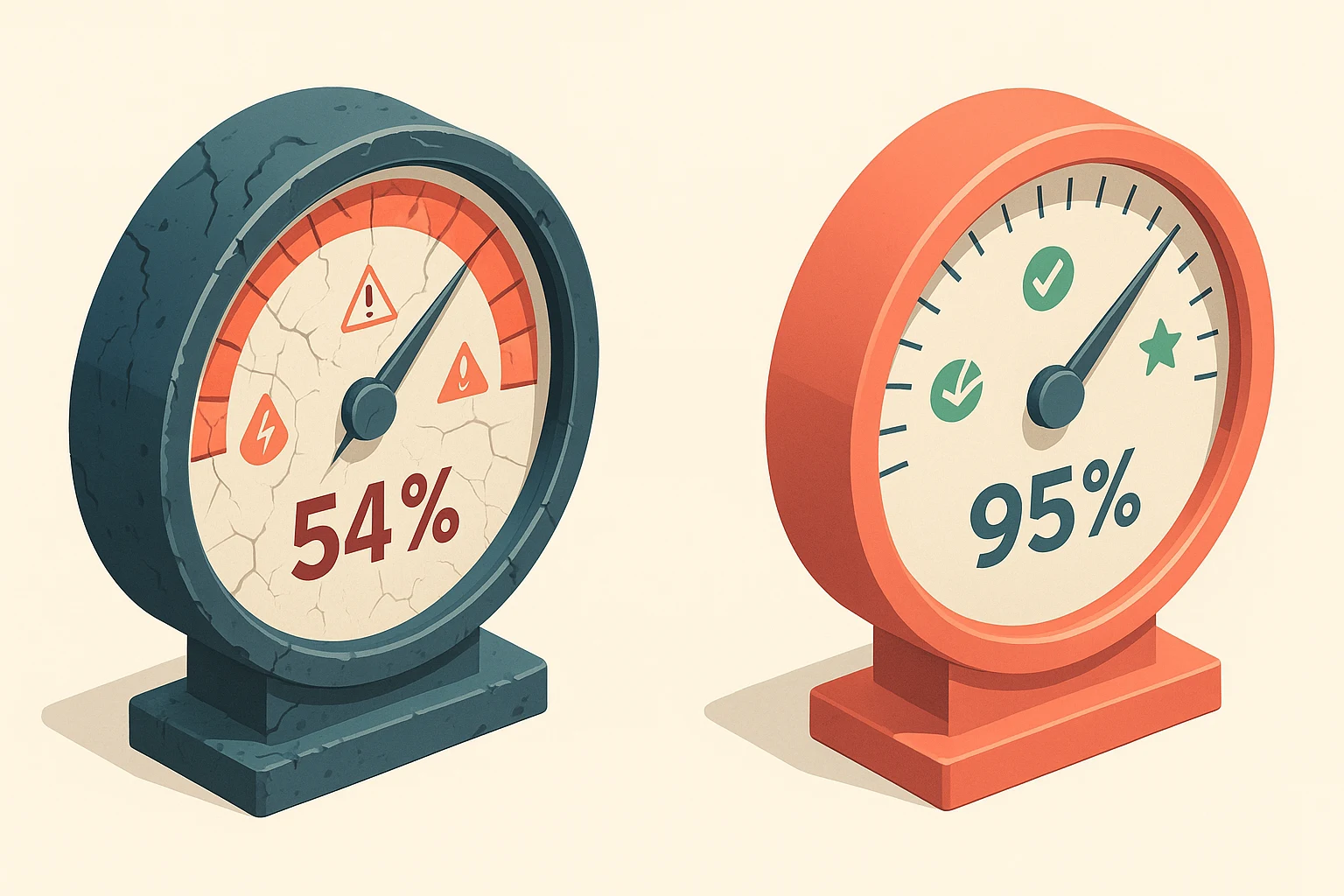
Your competitors aren't beating you because they have better AI tools. They're beating you because they have better judgment about what actually matters in hiring.
When you're building a small team, 6, 8, 10 people, each hire matters disproportionately. It's like adding sugar to a small glass of water versus a large glass. The concentration effect is massive.
You can't afford people who don't multiply everyone around them. And AI doesn't tell you who those people are. Humans do, through discovery, conversation, and contextual evaluation.
The Real Risk Isn't Speed
The real risk isn't that competitors are hiring faster. The real risk is that you're so worried about speed that you forget to focus on fit.
"Is it better to hire fast or hire right?"
That's the question that should keep you up at night. Not "should I use AI?"
Because if you hire fast and wrong, you'll spend the next six months dealing with the consequences. Team morale declining. Good people quitting. Your own confidence eroding.
If you hire slower and right, you'll spend the next 18 months watching that person make everyone around them better.
AI should help you do BOTH... hire at a reasonable pace AND hire right. But only if you're using AI to extend human judgment, not replace it.
What You Can Do Right Now
You don't need SuperHired to start fixing how you think about AI in hiring. Here's what you can do this week.
1. Audit Your Current Process
What are you actually spending time on?
Make a list of every hiring activity you do manually:
- Sourcing/searching for candidates
- Screening resumes
- Scheduling interviews
- Checking references
- Having discovery conversations
- Evaluating cultural fit
- Making final decisions
Now ask: Which of these are low-judgment activities (search, filter, schedule) that AI could handle? Which are high-judgment activities (discovery, evaluation, relationship-building) that must stay human?
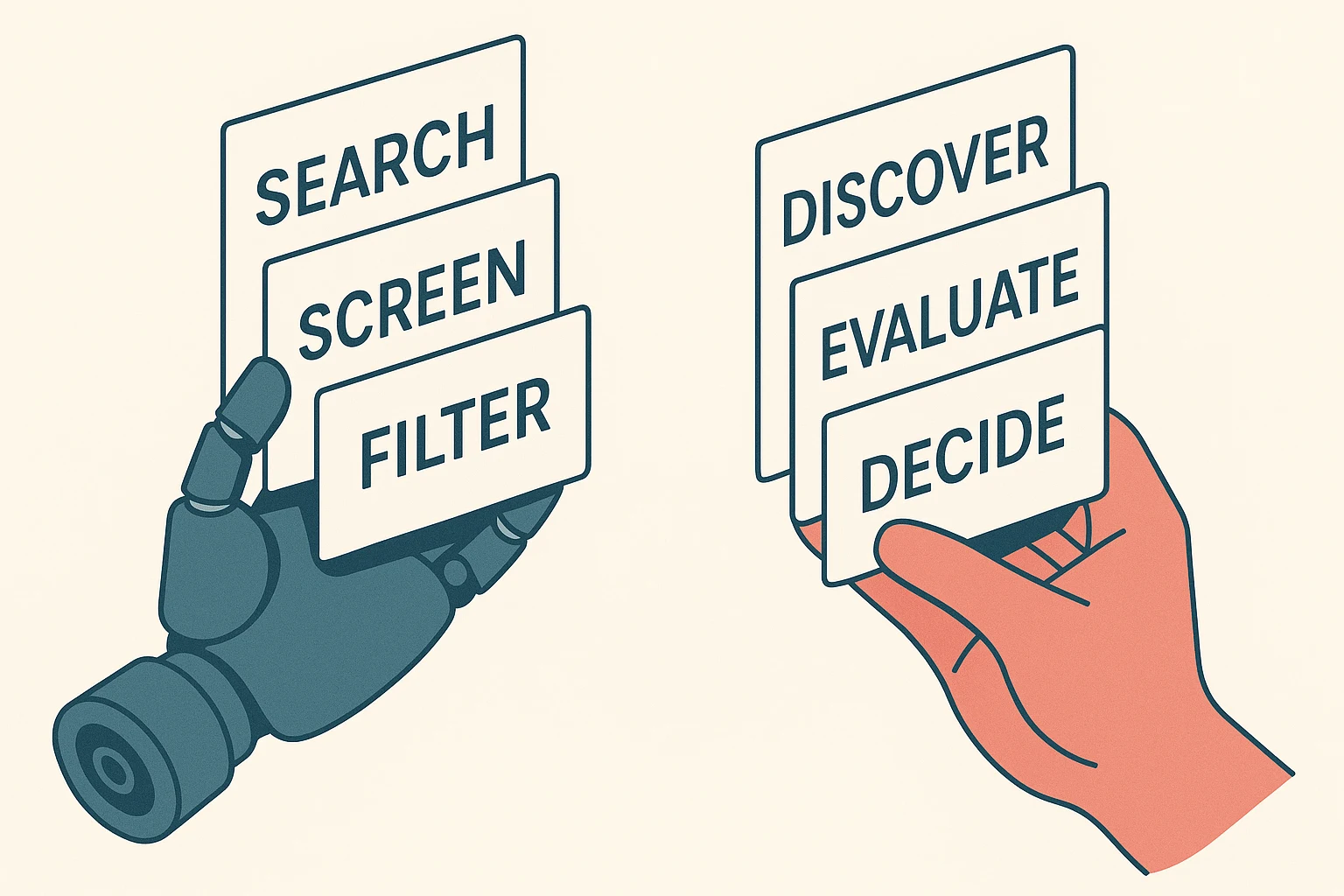
If you're spending 10 hours a week screening resumes, that's low-judgment work AI should handle. If you're spending only 2 hours on discovery conversations, you've got it backwards.
2. Fix First Principles Before Automating
Before you buy any AI tool, answer these questions:
- Do you actually know what you need? Not "we need a marketing manager" but what does success look like, what behaviors matter, what team dynamics exist?
- Have you defined cultural fit beyond vague values? What specifically makes someone successful in YOUR environment?
- Do you have a way to prove capability before hiring? Or are you relying purely on interviews?
If you can't answer these clearly, AI won't help. It'll just automate your confusion.
3. Evaluate AI Tools With the Critical Question
When vendors pitch you AI recruiting tools, ask:
"Does this help humans make better judgments, or does it make judgments for humans?"
If they say their AI "ranks candidates" or "identifies the best fits" or "eliminates bias"... they're replacing judgment. Run.
If they say their AI "expands your reach" or "eliminates busywork" or "presents candidates with context"... they're extending judgment. Listen.
4. Start Small, Test, Learn
Don't bet your next critical hire on an untested AI tool.
Try it for a less critical role first. See what it actually does. Does it present better candidates? Does it save you time? Does it help you make better decisions?
If yes, expand its use. If no, figure out why before you spend more money.
The Path Forward: Partnership, Not Replacement
Let's bring this full circle.
Surface answer: AI should do tireless searching, filtering, and pattern recognition. Humans should do discovery, contextual evaluation, relationship-building, and all judgment calls.
Deeper question: Don't automate broken processes. Fix your first principles first... understand what you actually need, define success clearly. Then let AI accelerate the fixed process.
Real answer: Scale your judgment by letting AI handle what it's genuinely good at (volume, speed, consistency) while humans handle what they're genuinely good at (context, relationships, nuance, persuasion).
The future of hiring isn't AI replacing humans. It's not humans working completely manually either.
The future is partnership. AI doing what AI does best. Humans doing what humans do best. And companies building teams where everyone makes everyone better.
Ready to See How This Works?
We're not going to pitch you expensive software that automates keyword matching.
We're going to show you how to leverage AI to eliminate busywork while keeping human judgment at the center of every decision that matters.
Start with value, not commitment:
Let us do discovery on your next role, completely free, and show you exactly what you're missing. No obligation. No pressure. Just value first.
You'll receive:
- A complete job map (6-month vision for the role)
- Team dynamics playbook (who they'll work with and how)
- RACI chart (crystal-clear decision rights)
Most clients tell us these documents alone are worth more than our entire fee.
📅 Schedule Your Free Discovery Session (No Obligation) →
Not hiring right now?
Subscribe for more hiring insights that actually work. No fluff. No corporate jargon. Just the truth about building teams that make everyone better.
📧 Get More Hiring Insights (Zero Fluff) →
About the Author: Joshua Hill is the founder of SuperHired, a discovery-led recruiting firm → that achieves 95% retention at 18 months. After 10 years in the military and years fixing broken hiring processes, he built SuperHired to help SMB leaders leverage AI without losing the human judgment that actually matters in hiring.
Unlocking Talent Potential
Transform your hiring process with our proven strategies.
Join Our Talent Insights Newsletter
Subscribe for the latest insights on team building and enhancing talent density in your organization.



